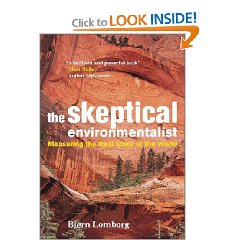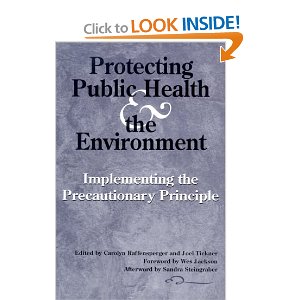
Bjorn Lomborg
UPDATED 6 Oct 09 to upgrade to five stars and add links that comprise an apology of sorts. The more I read the less I know, and the more I appreciate the absolute essentiality of getting all points of view face to face before a citizen's wisdom council. New links that complement this book:
The Resilient Earth: Science, Global Warming and the Fate of Humanity
Acts of God: The Unnatural History of Natural Disaster in America
The Next Catastrophe: Reducing Our Vulnerabilities to Natural, Industrial, and Terrorist Disasters
Eco-Imperialism: Green Power, Black Death
The Real Environmental Crisis: Why Poverty, Not Affluence, Is the Environment's Number One Enemy
At root, Lomborg is a disciple and blind follower of the paradigm best articulated by Julian Simon, who has himself been discredited here and there by well-educated environmentalists. Lomborg's professionalism and devotion to data are not questioned here–one either shares his paradigm or one does not. It merits comment that there are now several web sites, one of them in Denmark founded by his own colleagues, dedicated to exposing the flawed assumptions and analysis that went into this corporately attractive politically-biased treatise.
This is indeed a brilliant and powerful book, just as a nuclear explosion is brilliant and powerful–and very destructive. However well-intentioned–and I do not question, even applaud, the author's intentions, what we have here is a rather scary combination of fragmentary analysis in depth, combined with a strong belief system that accepts as a starting point the concept that the earth is infinitely renewable and no matter what happens, that is a “natural” turn of events.
…
Just as 9-11 was necessary before a paradigm shift in national security concepts could be achieved (now we know that individuals without weapons can turn our own civilian instruments against us in really damaging ways), I fear that a major environmental–perhaps even a terrorist-environmental event, such as exploding train cars full of chlorine, will be required before citizens as a whole experience the paradigm shift and understand that a) we live in the closed system and b) the burden of proof must be precautionary rather than exploitative.
We are soiling our seed corn and the earth it grows in. Lomborg would have us believe that what we grow within such a paradigm is natural and good–no doubt he has an explanation for the dramatic drops in sperm counts around the world, the troubling increases in asthma across Canada and the East Coast and other nations reeling from antiquated coal-fueled power plants (most of them in the mid-West), and other documented demographic costs to uncontrolled liquidation of the earth.
I will end with one very significant concession to Lomborg and his adherents: this book, compelling in isolation, makes it clear that nothing less than the full application of the distributed intelligence of the citizenry on a 24/7 basis, will be sufficient to monitor, evaluate, and comprehend the breadth and depth of our attacks on the earth. It is now clear to me that until we have a global web-based community of citizen observers able to enter data at the neighborhood level, using peer-to-peer computing power to analyze distributed data, that the citizens will continue to be at the mercy of corporate computers and political manipulation.
I strongly recommend this book, and Czech's book, as companion volumes framing a much higher level of data and debate that is now beginning.







